December 20, 2022
Following the Platte River.
The Platte River is wide and shallow, and looks like it should be easy to cross. But the waters hide deadly quicksand. The Oregon Trail migrants followed the southern bank, while the Mormons and later transcontinental railroad, joining from Omaha, followed the northern bank.

More signs of trouble along the Oregon Trail from Indian attacks in 1864, here at Plum Creek just south of the Platte west of Fort Kearney.

13 men in a freight wagon train bound for Denver were killed, and buried here, and a young woman and boy were taken captive.

Sunflowers south of Nebraska’s Platte River, near Plum Creek.

Hay fields south of the Platte River, central Nebraska.

The Pony Express relay station in Gothenburg, Nebraska, on the north bank of the Platte River.

On the south bank, the Oregon Trail passed the military post of Fort McPherson, established during the Indian Wars in the 1860s.
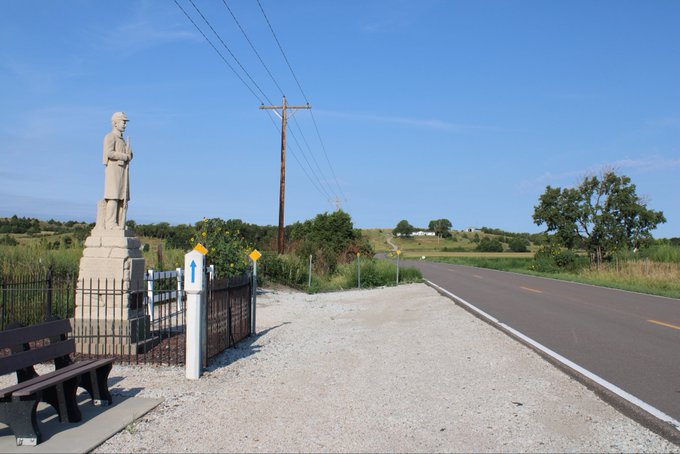
The signpost shows this is part of the Lincoln Highway, the first automobile route across the US. It’s the route used by the 1919 Transcontinental Motor Convoy, in which then Lt. Col. Dwight Eisenhower participated.
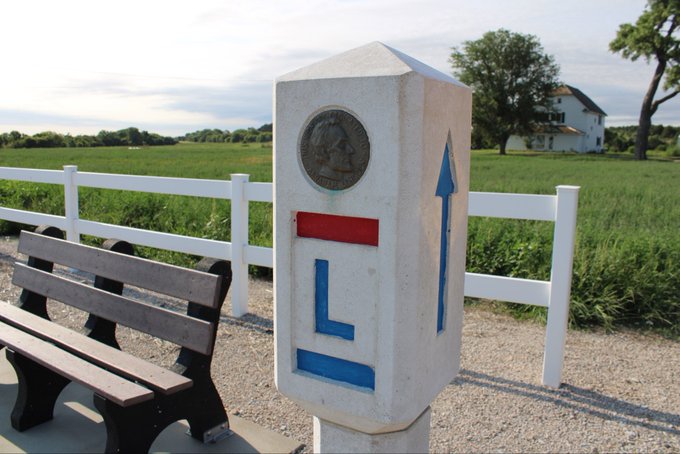
Today, the former site of Fort McPherson is a national cemetery, where military veterans up to the present day are laid to rest.

Cattle grazing on our approach to North Platte, Nebraska.

Checking out a traditional sod hut used by homesteaders on their initial arrival in Nebraska, outside North Platte.



Barbed wire Indian hunting a barbed wire buffalo, outside North Platte, Nebraska.

Western Motel, North Platte, Nebraska.

Buffalo Bill Cody’s ranch outside North Platte, Nebraska. This was the home base for his traveling “Wild West” show that established many of our mythic images of the American West.

Do not tease the buffalo at Buffalo Bill’s ranch.

Covered wagon inside Buffalo Bill’s barn, most likely from the show itself.

This wagon has a “roadometer”, a kind of odometer for tracking miles traveled. I’ve read elsewhere that this device was invented by the Mormon migrants traveling the same route to Utah.

Posters and photographs on display at Buffalo Bill Cody’s ranch in North Platte, Nebraska.




Buffalo Bill Cody’s house, on his ranch in North Platte, Nebraska.



Buffalo Bill Cody’s hat and shoes. North Platte, Nebraska.

Grain elevator in North Platte, Nebraska. The town is a major junction along the Union Pacific Railroad.

The Union Pacific’s facility in North Platte is the largest railway sorting yard in the world. You can observe it from a special viewing tower for visitors.

The driver’s seat of an old Union Pacific locomotive in North Platte, Nebraska.

Those are some big wheels.

Built soon after the Civil War, the first transcontinental railroad was built simultaneously east from California (the Central Pacific) and west from Omaha (the Union Pacific). North Platte was a key location on the latter.

A view inside a more modern diesel locomotive. North Platte, Nebraska.



Inside an old Union Pacific mail car. North Platte, Nebraska.

During World War 2, North Platte was a key junction for troops moving from one coast to the other. Thousands of locals volunteered to run a canteen to serve them home cooked meals as they passed through. The local museum has a special exhibit about it.




Could this be Buffalo Bill?

At North Platte, the Platte River splits into north and south tributaries. The Oregon Trail continued along the southern bank of the South Platte to O’Fallon’s Bluff. Today it seems like a gentle slope, barely noticeable from the highway. But for the Oregon Trail migrants, it was a tough slog to the top.

Taking a rest stop at Ogallala, along the South Platte River, “the cowboy capital of Nebraska”.

Ogallala’s “Boot Hill” cemetery hosts a variety of curious wooden tombstones from the “good old days”. Poor Rattlesnake Ed.
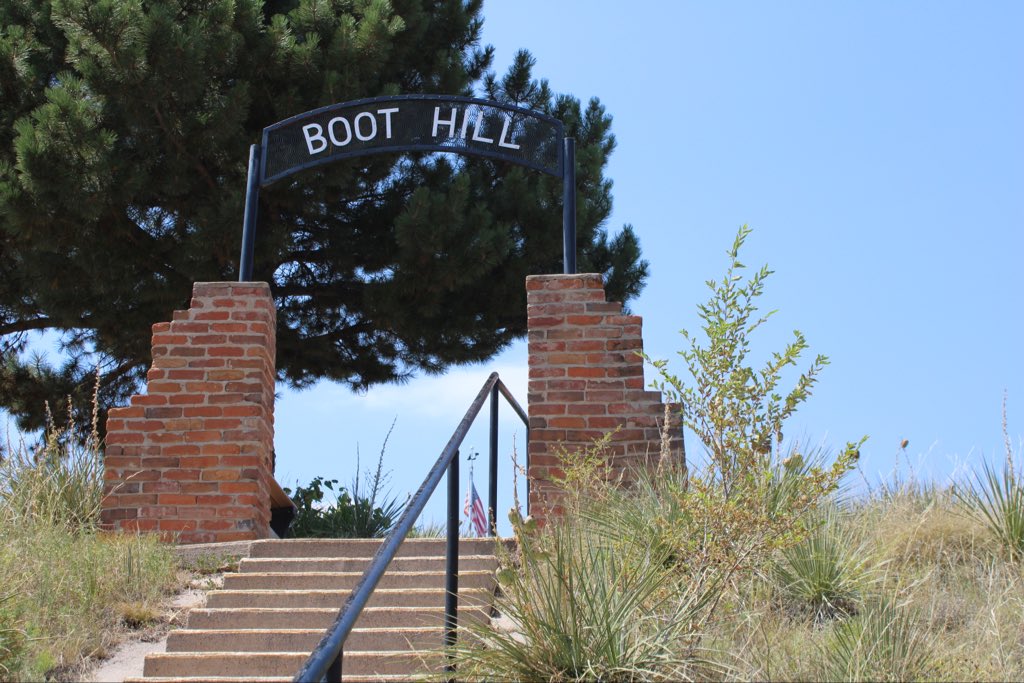

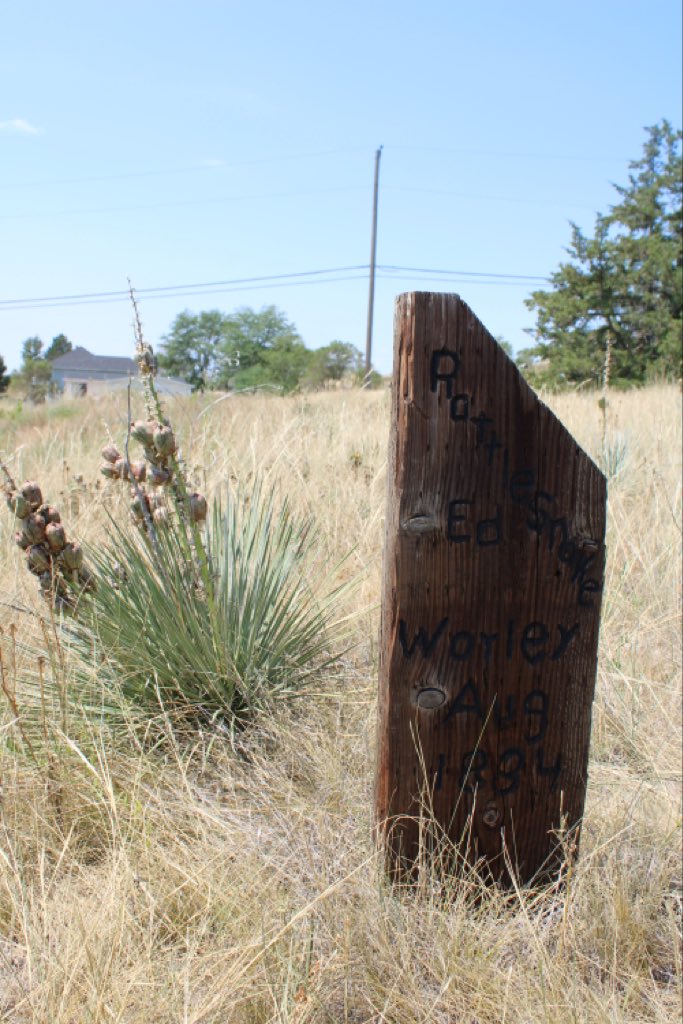

Cowboy gazing out over the tombstones at Ogallala’s Boot Hill.

West of present-day Ogallala, it was finally time for the migrants on the Oregon Trail to brave the quicksand and cross the South Platte, into order to rejoin the North Platte heading into Wyoming.

I was able to get down to the waterside, where you can see how treacherous the sand banks are. Many wagons and ox teams foundered in this crossing of the South Platte.

After crossing the South Platte, the migrants faced an immediate challenge: climbing California Hill, their toughest incline yet.

Given the condition of the road running alongside the old trail, it was going to be a challenge for us too.

A cow halfway up California Hill, wondering what we are thinking.

Our wagon climbing up California Hill, in who-knows-where Nebraska.

Hey, at least we’re in the right place. Climbing California Hill, Nebraska.

Looking back down towards the South Platte crossing from near the top of California Hill.

I say “near the top” because look what’s ahead. It doesn’t look as bad in the photo as in real life.

We had to put our car in gear to get up that last sandy stretch. Now imagine with oxen or mules.

But here we are, very dusty, but on top of California Hill headed to the North Platte.

The view across the plateau between the North and South Platte rivers, as we approach Ash Hollow.

We’ve reached the top of Windlass Hill. From here, Oregon Trail migrants had to carefully lower their wagons down a very steep slope leading down to Ash Hollow.

A grasshopper atop Windlass Hills. Huge swarms of grasshoppers were a plague to early homesteaders who tried to settle the prairies of Nebraska after the Civil War.

A signboard showing how Oregon Trail migrants struggled to lower their wagons down Windlass Hill. Losing control could means utter destruction of their wagon and belongings, even death.

The original wagon ruts have eroded this ravine into the hillside.


The path of the Trail is a bit easier to see in this aerial photo in the nearby visitor center, versus on the ground.

The reward for this difficult descent was Ash Hollow, a well-watered valley that offered shelter and the first real firewood for weeks (along the prairie, migrants had to use dried buffalo chips for fuel).

Ash Hollow has been a kind of oasis for animals and humans for thousands of years. Remains of mastodon, rhinoceros, early horses, and other extinct mammals have been found there.

For Native American tribes roaming the plains, Ash Hollow was a landmark and a gathering point.

But the oasis at Ash Hollow hid a deadly secret. This inviting pond from which Oregon Trail migrants unsuspectingly gathered their water had been polluted with cholera.

18-year-old newlywed Rachel Patterson arrived in Ash Hollow in June 1849, contracted cholera from the pond, and died within 24 hours. Migrants blamed local Indians for poisoning the water.

We bought souvenir t-shirts at the Ash Hollow gift store.

After descending through Ash Hollow, we rejoined the Union Pacific Railroad headed west through the Sand Hills of western Nebraska, along the North Platte River.

The Sand Hills are stabilized sand dunes with grass growing on them, covering about a quarter of the state.

Standing astride the transcontinental railroad in western Nebraska.

The transcontinental railroad running along the North Platte River, in western Nebraska.

Narcissa Whitman was one of the first women to travel to Oregon, as a missionary, in 1836. She wrote in her diary of seeing these hills along the North Platte. Her diary was published and encouraged many other families to follow in her footsteps west.

The long road through the Sand Hills of western Nebraska.

The Lazy-U Motel in Broadwater, Nebraska looks inviting.

As the migrants continued west, they gave names to the distinctive rock formations they passed. They dubbed these Jail and Courthouse Rocks.

Unless they went out of their way, however, the Oregon Trail migrants most likely would have seen Jail and Courthouse Rocks from a distance, like this.

Their next landmark, emblematic of the Oregon Trail itself, was Chimney Rock.

Just watch your step.

Traveling at 10 miles per day, the migrants would have seen the spire of Chimney Rock looming ahead for days, with mounting anticipation.
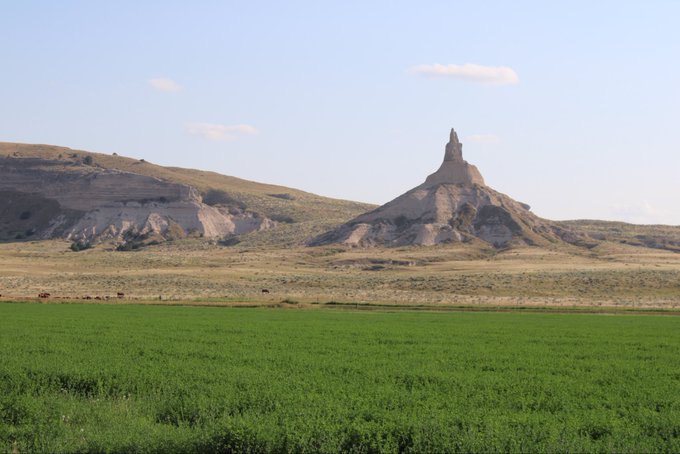
Time to rest for the night before tackling the next part of the Trail at Scott’s Bluff.

The journey continues here in Part 5: Over Scotts Bluff and Into Wyoming.
[…] The journey continues here, in Part 4: Following the Platte River. […]